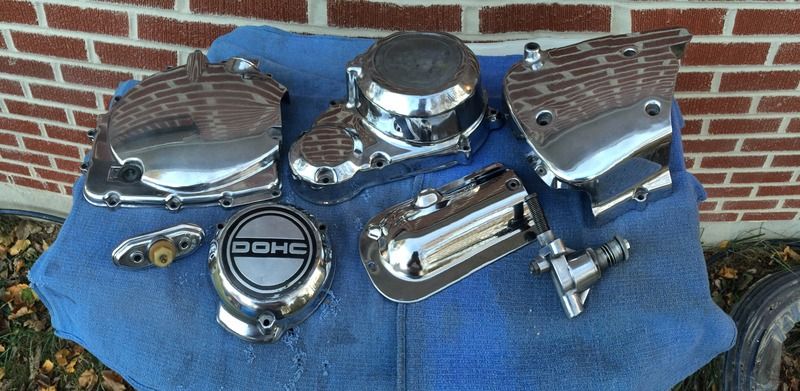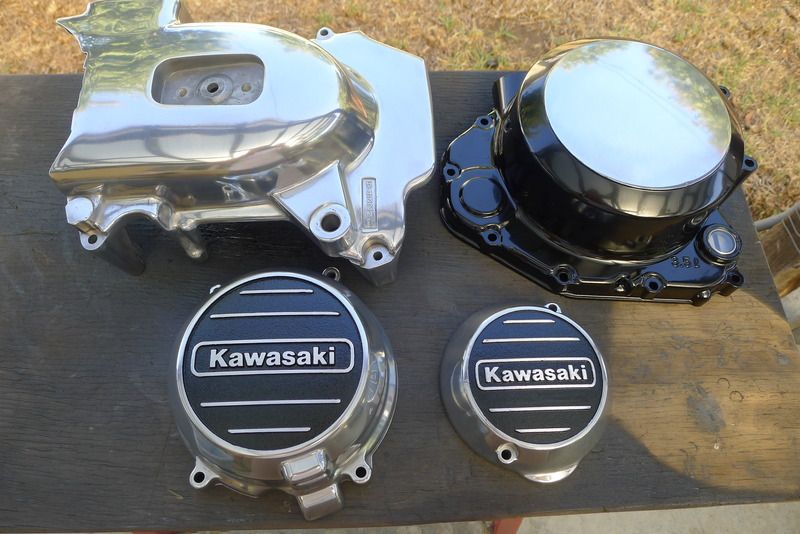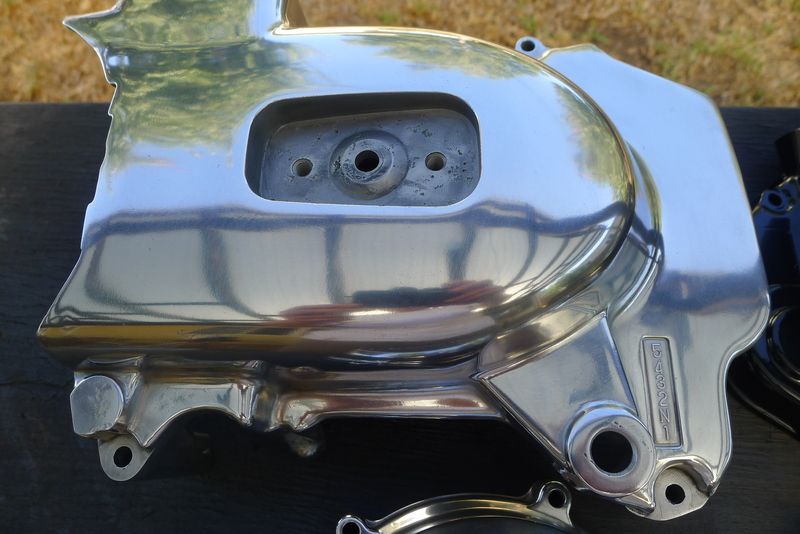I plan on getting clear powder coat on the wheels though.
Announcement
Collapse
No announcement yet.
Clear coat on wheels and engine cases?
Collapse
X
-
...and to bring this back around to the OP's question:
A lot of people have had great results with Wizards Power Seal instead of clear coating.Originally posted by 1978GS750E View Post
I plan on getting clear powder coat on the wheels though.
-
I tried the sanding discs, and a couple of other things to eliminate the manual sanding. When I went to the black compound with a sisal wheel (compound and wheels from Caswell), there were always scratches left behind. From the pics you guys posted though, it sounds like it was my polishing technique more than the polish/wheel. I got similar results, just with a lot more work. It was definitely an improvement, as I had previously polished completely by hand with progressively finer sandpaper up to 2000, and then Mothers and a rag...
Leave a comment:
-
 Guest repliedWhat sisal wheel are you using?...or, I should say who's? I've been using HF sewn and loose wheels...they go quickly but they're cheap enough for multiple grits. I need to invest in my own motor, wheels and a rake {?} for 1st trimming.Originally posted by Nessism View PostThere are lots of different ways to achieve the results.
Guest repliedWhat sisal wheel are you using?...or, I should say who's? I've been using HF sewn and loose wheels...they go quickly but they're cheap enough for multiple grits. I need to invest in my own motor, wheels and a rake {?} for 1st trimming.Originally posted by Nessism View PostThere are lots of different ways to achieve the results.
The reason I like the sisal wheel and black cutting compound is because it's the most aggressive polishing medium available. It will take the 220 grit scratches right out. I've tried that with a sewn wheel before and it doesn't get it. I'm lazy.
Leave a comment:
-
There are lots of different ways to achieve the results.
The reason I like the sisal wheel and black cutting compound is because it's the most aggressive polishing medium available. It will take the 220 grit scratches right out. I've tried that with a sewn wheel before and it doesn't get it. I'm lazy.
Leave a comment:
-
I use a similarly simple process, but just a little bit different.Originally posted by Nessism View PostRemove old clear coat with paint stripper.
220 grit paper on a palm sized DA to get out the majority of the corrosion. A stainless steel wire wheel on a dremel for the nooks and cranies.
Sisal wheel w/ BLACK cutting compound to bring back the shine.
Done.
Aircraft stripper to remove the clear coat.
Harbor Freight FINE fiber sanding discs to remove any corrosion.
White compound on a sewn cotton wheel to polish.
I am pleased with the results.

.
Leave a comment:
-
Originally posted by Nessism View Post
Looks like I still did way too much work.
I found the swirls from a dremel and the scratches from less than 320 took too long to work out. Also that black on a sisal looks good, but left noticeable scratches and swirls that were removed by the higher grit compounds.
I have a feeling you have a lot more practice with this than I do though... The method above is what I landed on after much trial and error, but can probably still be refined.
Do you have any pics of the pieces as a work in progress to show what it looked like after the 220 and dremel?
Leave a comment:
-
-
I almost forgot... make sure to remove the factory clear coat 1st using aircraft stripper...
Leave a comment:
-
This was the finished product after black, brown, white, then red polishing compounds. I cleaned up with Dawn and a toothbrush. Then i gave it a good rub with Wizards Power Seal. Even if you're stopping at a brushed finish, i highly recomend Wizards to protect from oxidation.
20170402_222507.jpg
Leave a comment:
-
This is with 600
20170402_175941.jpg
You can see where i changed direction of sanding around the curves. I wasn't concerned because i knew i was going to be polishing. If you want to stop at a brushed finish, just make sure to go only in one direction for the final step.
Use a good wet/dry paper, and wet sand. 3M also make some good sanding sponges that are a bit easier to work with. You can get them at home depot, advance or auto zone...
Leave a comment:
-
I recently got done polishing my cases. I went with a high polish with a buffing wheel on a bench grinder, but sanded for prep.
The prep work left a nice brushed look, I just chose to go further. As long as the parts aren't too bad you can start with 320 to remove small pits and dings, then jump right to 600 and be fine.
Go in one direction with the 320, then with the 600, sand perpendicular to the scratches you made with the 320.
Leave a comment:
-
The stock finish is brushed but with something like 600 grit, not 220. You can do it by hand but it's a lot of work.
Leave a comment:
.png)


Leave a comment: